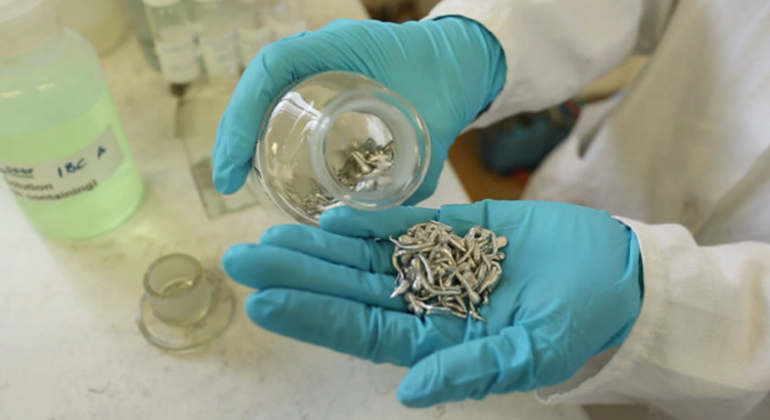Globally unique technology for PV scrap recycling saves raw materials
Indium, selenium, tellurium and gallium – rare metals from the glass sandwich.
Until recently, discarded photovoltaic modules were – at best – shredded and used for the production of low quality glass. The rare metals they contained were lost for good. Thanks to an innovative and environmentally friendly technology developed in the Loser Holding group, the fragile glass layers of the thin film modules can be separated from each other successfully and used by the high quality raw materials industry. Rare metals such as indium, selenium, tellurium and gallium which are otherwise expensive and have to be imported are recovered from the scrap. The panel glass can be used directly for the manufacturing of float glass, and the ferrous back-cover glass can be used in the manufacturing of windows, for example. At CWT Chemische Werke Tangermünde GmbH in Saxony-Anhalt, which is part of the Loser group, the first industrial system is to go into use processing PV scrap.
This is a unique technology, worldwide, for the recycling of photovoltaic modules. Robots send the thin film modules to a laser cabin where concentrated light is applied through the upper layer of glass and provides the energy needed to destroy the semiconductor layers. The sandwich can now be pulled apart with vacuum cups without the panels shattering.
Once the sandwich has been opened, the rare metals in the thin film module are accessible to fluids and can be removed on a hydro-metallurgical basis. “We’re talking about a biodegradable compound which is also found in nature,” explains the company’s managing director Ulrich Loser. “And after the semiconductors have been separated by the solution, the active materials can be used again.” The rare metals are then prepared for the manufacturing of photovoltaic modules or for use in the electrical technology and electronics industries. The cleaned glass can be used as a valuable secondary raw material which reduces the requirement for sand, and thanks to a low melting point, saves a considerable amount of energy in the manufacturing of glass when compared to its manufacturing from scratch. The company’s relative proximity to the plate glass-works near Magdeburg, the potential buyers of the cleaned glass, was the determining factor in its decision to buy the disused production plant for fertilizer and animal feed in Tangermünde. “We want to breathe new life into the Tangermünde chemical works,” highlights Loser. The first goal is to prepare for restarting the production of the phosphorous-based fertilizer, while the next step is the construction of the first industrial system for processing the photovoltaic modules. If everything goes to plan, by 2018, the plant could be processing around 10,000 tonnes of thin film modules per year.
Loser estimates that in excess of 10 million tonnes of PV modules have so far been installed in Europe, and large quantities of discarded PV modules are already finding their way into the waste-management economy. Some come from insolvent solar companies, while some are unwanted, having been replaced by newer, higher output modules. Like all technology, their “useful life” is also limited, which means a huge supply of scrap PV equipment is a future certainty. This is what Loser wants to be ready for. Following the successful trials with all of the module versions tested so far, the Loser subsidiary Tesoma is to construct a demonstration system in Lichtenau. Potential customers can find out about the process at the special purpose machinery manufacturer located in neighbouring Saxony. The industrial systems for the works in Tangermünde are also to be constructed at Tesoma.
The Loser group is focusing on Asia and America as export markets for the automated, turnkey systems for the recycling of PV scrap. “We want to take the process to market maturity and sell it worldwide,” says Loser. Tangermünde in the north of Saxony-Anhalt is to be the first centre for the processing of photovoltaic scrap.
Source
IMG – Investment and Marketing Corporation Saxony-Anhalt | Bettina Koch 2016








